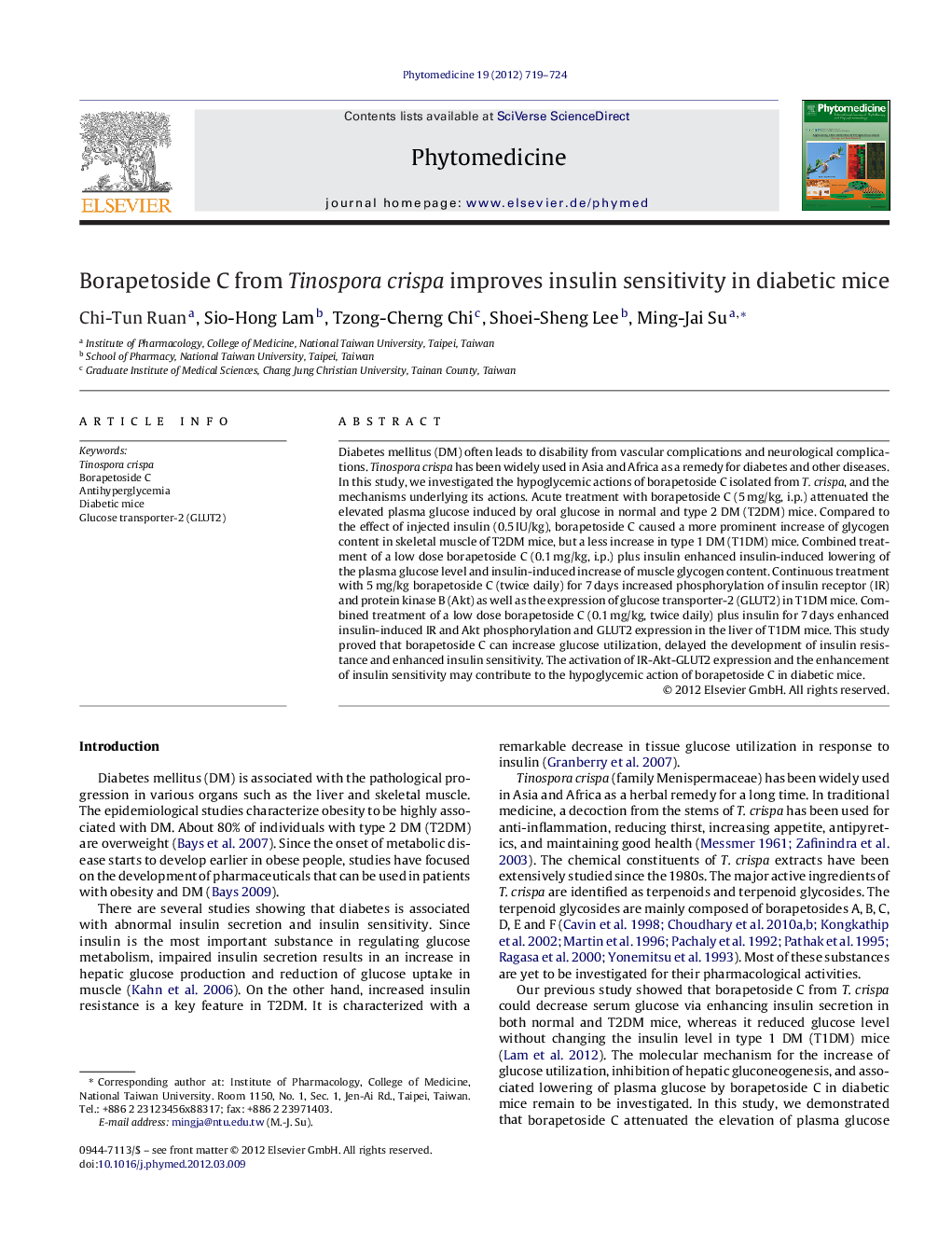| Article ID | Journal | Published Year | Pages | File Type |
|---|---|---|---|---|
| 2496820 | Phytomedicine | 2012 | 6 Pages |
Diabetes mellitus (DM) often leads to disability from vascular complications and neurological complications. Tinospora crispa has been widely used in Asia and Africa as a remedy for diabetes and other diseases. In this study, we investigated the hypoglycemic actions of borapetoside C isolated from T. crispa, and the mechanisms underlying its actions. Acute treatment with borapetoside C (5 mg/kg, i.p.) attenuated the elevated plasma glucose induced by oral glucose in normal and type 2 DM (T2DM) mice. Compared to the effect of injected insulin (0.5 IU/kg), borapetoside C caused a more prominent increase of glycogen content in skeletal muscle of T2DM mice, but a less increase in type 1 DM (T1DM) mice. Combined treatment of a low dose borapetoside C (0.1 mg/kg, i.p.) plus insulin enhanced insulin-induced lowering of the plasma glucose level and insulin-induced increase of muscle glycogen content. Continuous treatment with 5 mg/kg borapetoside C (twice daily) for 7 days increased phosphorylation of insulin receptor (IR) and protein kinase B (Akt) as well as the expression of glucose transporter-2 (GLUT2) in T1DM mice. Combined treatment of a low dose borapetoside C (0.1 mg/kg, twice daily) plus insulin for 7 days enhanced insulin-induced IR and Akt phosphorylation and GLUT2 expression in the liver of T1DM mice. This study proved that borapetoside C can increase glucose utilization, delayed the development of insulin resistance and enhanced insulin sensitivity. The activation of IR-Akt-GLUT2 expression and the enhancement of insulin sensitivity may contribute to the hypoglycemic action of borapetoside C in diabetic mice.
Graphical abstractFigure optionsDownload full-size imageDownload high-quality image (84 K)Download as PowerPoint slide
